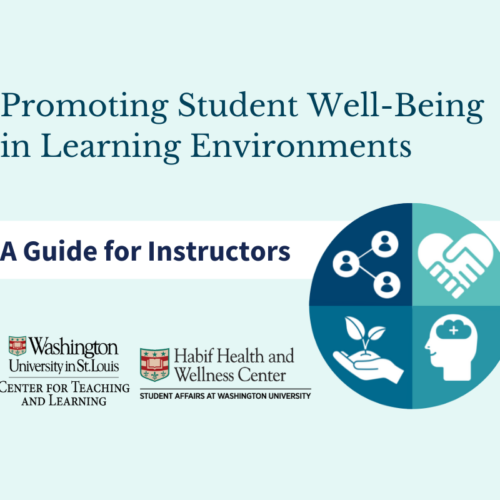Preparing for Remote Teaching in COVID-19: The Chronicle
“I need to become a better online teacher. Fortunately, I have a fair bit of practice in teaching people new things. So I’ve created a summer syllabus for myself. I share it here in hopes that it may help other faculty members sharpen their online-teaching skills and prepare for September,” writes Sarah Rose Cavanagh, associate professor of psychology at Assumption University and associate director for grants and research at the university’s teaching center, in a recent article in The Chronicle of Higher Education.
In the article, Cavanagh outlines her self-taught syllabus to prepare for remote teaching in the fall. Her course objectives include gaining a better understanding of how online and face-to-face teaching differ in approach and philosophical orientation, and a fluency with how each can shine pedagogically, experimenting with new technologies that support active learning in a virtual environment, exploring low-cost equipment and software that will help craft better educational content, and developing a map of teaching strategies that create vibrant online learning environments.
Course policies include:
- “Course work will be flexible, ongoing, and mostly asynchronous”: “Many professors learned the hard way last semester: Some synchronous sessions work well but trying to replicate a face-to-face classroom wholesale on Zoom is often not the best way to move a traditional class online.”
- “Choices are aplenty”: ” For my fall courses, I will offer students the same freedom and create multiple pathways for them to fulfill our learning goals.”
- “Yet structure and ‘transparency’ are key”: “Flexibility is important, but I also know that I won’t get anything done if I don’t schedule it,” Cavanagh writes. “Likewise this summer, I’m aiming for transparency — the degree to which expectations and assignments are clear and available ahead of time — since that is important in a virtual environment.”
Cavanagh also recommends a number of books, blog posts, and articles about remote teaching including “Small Teaching Online: Applying Learning Science in Online Classes,” “Minds Online: Teaching Effectively With Technology,” and articles on humanizing your online classroom and on fostering deep reading in digital environments.
Finally, Cavanagh’s course assignments or “homework” for the summer include watching excellent online teaching content, experimenting with new tech tools, and finding ways to practice a “pedagogy of care,” or “class policies, assignments, and assessments that maximize student engagement and minimize boredom, anxiety, and confusion, and that respect the deep need for community we all share — particularly in these times of upheaval.”
Cavanagh’s course assessment will be the degree of student learning in her courses this fall. She also recommends other courses in case instructors want to follow a different model of preparation.
“Years ago, when I was drawn to a life of the mind, did I envision that my work would one day entail investigating wireless microphones and camera stabilizers? Of course not. I could stamp my feet and lament not being able to do things the way I’ve always done them. But instead, I’m going back to school this summer. My students deserve nothing less. And yours do, too,” Cavanagh writes.


